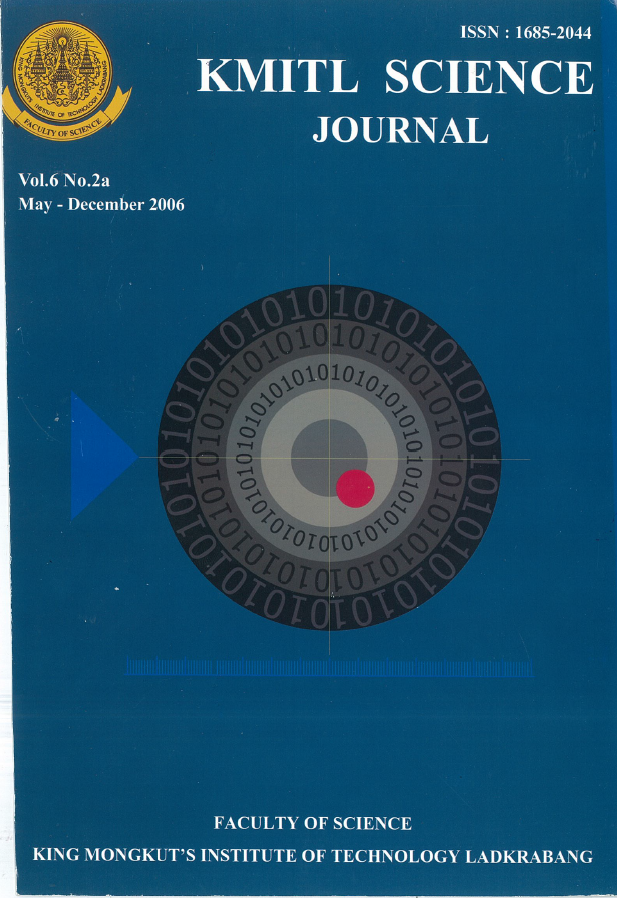The Comparison of Efficiency of Control Chart by Weighted Variance Method, Scaled Weighted Variance Method, Empirical Quantiles Method and Extreme-Value Theory for Skewed Populations
Main Article Content
Abstract
The objective of this study is to compare the efficiency of control chart using Weighted Variance Method, Scaled Weighted Variance Method, Empirical Quan-tiles Method and Extreme-value Theory for skewed populations. The efficiencies of control chart are determined by average run length. The control charts in the study is chart. Various values of the coefficient of skew ness are 0.1,0.5,1.0,2.0,3.0,4.0,5.0,6.0,7.0,8.0 and 9.0. Various values of the level of the mean shift equals to 0ơ, 0.5ơ, 1.0ơ, 1.5ơ, 2.5ơ, 3.0ơ The sample size are 3, 5, and 7. The data for the experiment are obtained through the Monte Carlo Simulation Technique and the experiment were constructed from 10,000 samples and repeated 1,000 times for each case. The result of the study is that the data have Weibull distribution at coefficient of skew ness 0.1,0.5,1.0,2.0 and 3.0. The Scaled Weighted Variance Method have the most efficiency sample size of 3 at coefficient of skew- ness 0,4.0,5.0,6.0,7.0,8.0 and 9.0. Extreme – value Theory has the most efficiency sample size of 3, with Lognormal distribution at coefficient of skew ness 0.1,0.5 and 0.1 The Weighted Variance Method has the most efficiency sample size of 3 at coefficient of skewness 2.0,3.0,4.0,5.0,6.0,7.0,8.0 and 9.0. The Scaled Weighted Variance Method has the most efficiency sample size of 3, with Burr’s distribution. At coefficient of skewness.0.1 and 0.5. The Weighted Variance Method has the most Efficiency sample size of 3, at coefficient of skew ness 1.0,2.0,3.0,4,and 0.5. The Scaled Weighted Variance Method has the most efficiency sample size of 3.
Keywords: Average Run Length, Control Chart
Corresponding author: E-mail: adisak.pon@kmutt.ac.th
Article Details
Copyright Transfer Statement
The copyright of this article is transferred to Current Applied Science and Technology journal with effect if and when the article is accepted for publication. The copyright transfer covers the exclusive right to reproduce and distribute the article, including reprints, translations, photographic reproductions, electronic form (offline, online) or any other reproductions of similar nature.
The author warrants that this contribution is original and that he/she has full power to make this grant. The author signs for and accepts responsibility for releasing this material on behalf of any and all co-authors.
Here is the link for download: Copyright transfer form.pdf
References
[2] A. Pongpullponsak W. Surachereiti and P. Kriweradechachai. 2004 The com-parison of Efficiency of Control chart by Weighted Variance Method, Nelson Method, Shewhart Method for skewed Populations. Proceedings 5th Applied Statistics Conference of Northern Thailand. Thailand.
[3] Castagliola, P. 2002 X ̅ Control Chart for Skewed Populations Using a Scaled Weighted Variance Method. Journal of Reliability, Quality and Safety Engineering. 237-252.
[4] Choobineh, F. and Ballard J. 1987 L:Control Limits of QC Charts for Skewed Distribution Using Weighted Variance. IEEE Transactions on Reliability 36, 473-477.
[5] Cowden. 1957 Statistical Methods in Quality Control. Prentice-Hall.
[6] Efron, B. 1979 Bootstrap Methods: Another Look at the Jackknife, Annals of Statistics 7, 1-26.
[7] Liu RY. And Trang J. 1996 Control charts for dependent and independent measurements based on bootstrap methods. Journal of the American Statistical Association 91, 1694-1700.
[8] Vermaat M. B., Roxana A. and Ion, Ronald JMM. 2003 a Comparison of Shewhart Individual Control Charts Based on Normal, Non-parametric, and Extremevalue Theory. Quality and Reliability Engineering International 19, 337-353.
[9] William H. Woodall and Douglas C. Mongomery. 1999 Research Issues and Ideas in Statistical Process Control. Journal of Quality Technology 31, 376-386.


